Now that we understand why we are here, let’s take a look at what we have to work with.
The machine is obviously a Mills High Top, although it has a strange name badge with no name. It’s got some of the trappings of a “21 Bell”, sometimes referred to as a 7-7-7, although it has definitely undergone some changes and a good bit of neglect during its life.
When we look at the side we see that the handle is in good shape, but that the sides have been painted grey (always a bad sign.) One of the absolute laws of slot machine restoration is “Grey paint never covers up anything good.”
If we take a closer look at the base, we can see that the wood is starting to separate. This will have to be stripped, sanded and glued back together, assuming that it is salvageable.
The window covering the jackpot area is pretty rough. First off, it is upside down. The silvered area is meant to cover the reserve jackpot, which would be at the top. The clear area is covered partially with black paint, probably to hide the fact that the jackpot was non-functional. More about that later.
Here’s a view inside the cabinet with the mechanism removed. The jackpot housing is there, but all of the important mechanical parts are missing (of course.) Jackpots are a little complicated to maintain, and a lot of people over the years have either removed them or lost key parts.
We can also see that there is no Gold Award mechanism present. We’ll have to do something about that later if we want this slot to be a reasonable rendition of a 7-7-7 machine.
There’s a lot more silver paint inside of the cabinet, and a couple of cabinet pieces are missing.
Here’s a close-up of the escalator, which appears to be in decent shape. All the critical parts are present, if a bit dirty.
In all these photos I’ve shown you the machine with the back bonnet and door removed. Let’s take a look at the reason why.
Wow.
Whoever did this has earned a permanent home in Slot Restoration Hell. Hey, I know that it can be tough to find an original lock or a suitable replacement, but was WELDING this junk to the back bonnet and rear door really the best solution you could come up with? Really?
Sometimes I just do not know what people are thinking.
Anyway, we’ll have to resolve this situation later. I’m hoping that I can grind off the welds and salvage both the door and the bonnet, but time will tell. Replacements for both are readily available, but I’d prefer not to go that route unless it is absolutely necessary.
Here’s a tip for everyone: If your restoration or repair strategy for an antique slot machine involves welding, you should probably stop and ask someone first. Had this been a very rare variety of machine the above procedure would have destroyed a ton of value.
Let’s move on to the mech itself.
This really doesn’t look too bad. The brake wires are missing, as is the extra operating spring, but none of those things are critical to basic operation and are often missing on old machines. The clock looks grimy but solid.
On the A-frame we can see more grey paint, but otherwise everything looks pretty good. There’s a ton of old grease and grime, but we’ve already established that the whole machine needs a good bath, so that’s no surprise.
On the other side of the mech we find some traces of rust and more grey paint, but again the critical parts are present.
The front of the mech confirms a few things. First, the reel strips need to be replaced. They’ve been spliced at several points and are just generally grungy. The more interesting things are down low, however, so let’s take a closer look.
Now the story is coming into focus. At some point someone thought that a coat of grey paint constituted a restoration, which is obviously not the case. We can see the active rust growing despite the paint job, so we know that the base plate will have to be stripped and/or blasted, and probably hit with a wire wheel to get rid of all the rust. Some of the shafts and other parts are showing signs of rust as well.
In the above photo you can also see the remnants of the original label which would have contained the serial number. I’d love to have that just so that the machine could be dated definitively, but as you can see it’s in rough shape. It’s faded and covered in oil and paint. When I tear the mechanism down I’ll see if there is any way to read the number, but I don’t have high hopes.
Here’s a cause for greater concern. It’s very obvious that the top payout slide has significant rust. Since the payout slides are designed to work with no lubrication, this is not a good thing. These slides will definitely need some attention.
We can also see that the rubber bumper on the far right is literally disintegrating and will need to be replaced, which will probably be a recurring theme as we get deeper into the mech.
Well, that’s about the size of it. There’s a lot of work ahead, but in general we’re in OK shape. The mechanism and cabinets are mostly complete, and a good many of the machine’s operating problems can likely be resolved by a good cleaning. It isn’t the best machine in the world, but it is far from the worst.
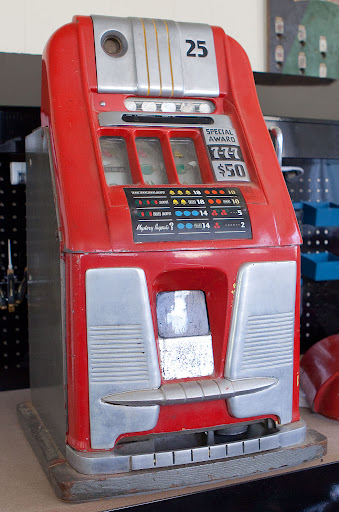
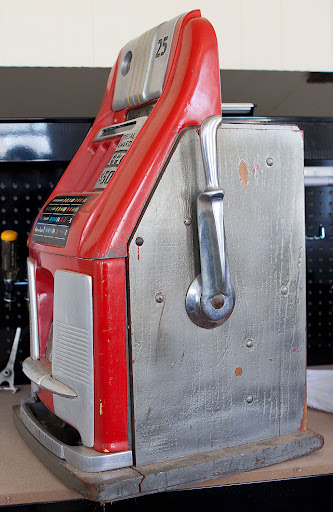
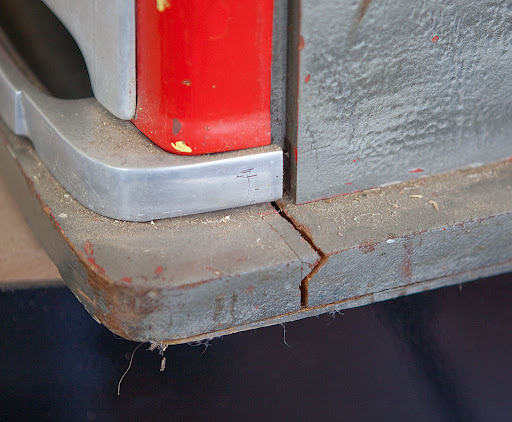
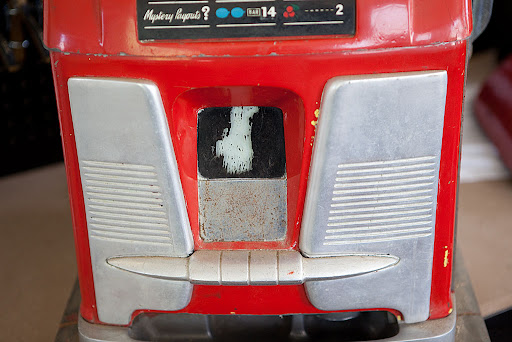
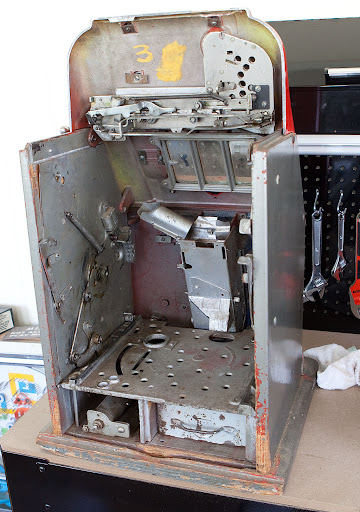
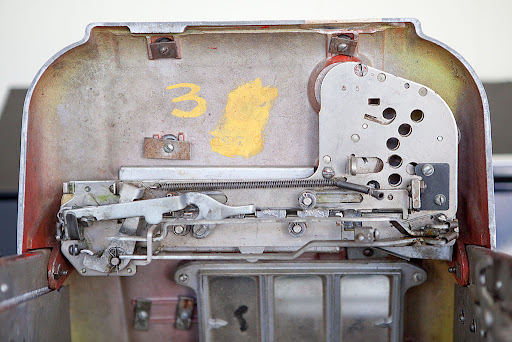
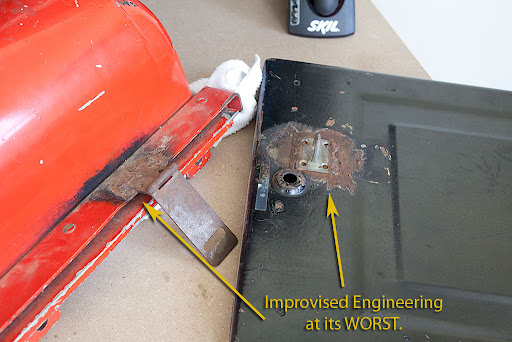
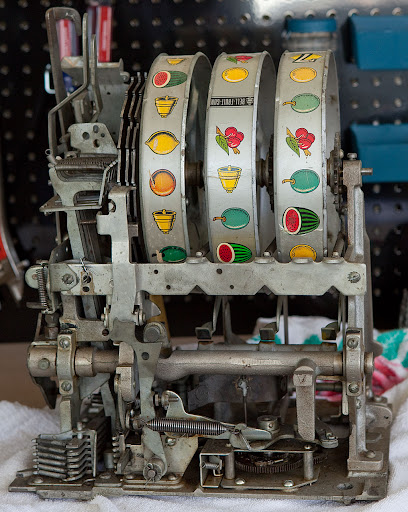
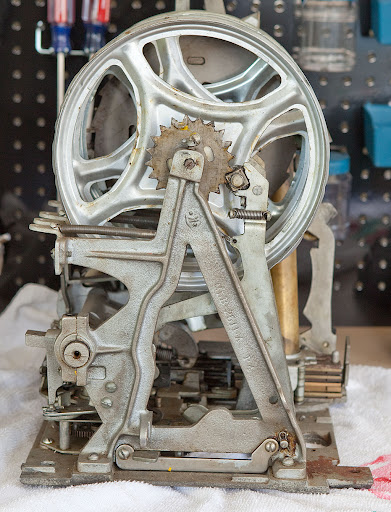
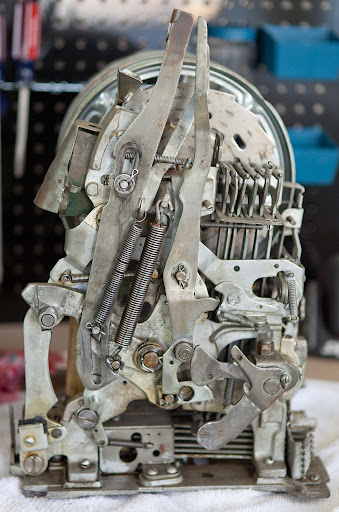
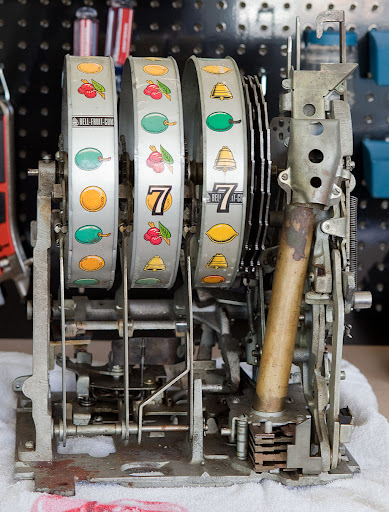
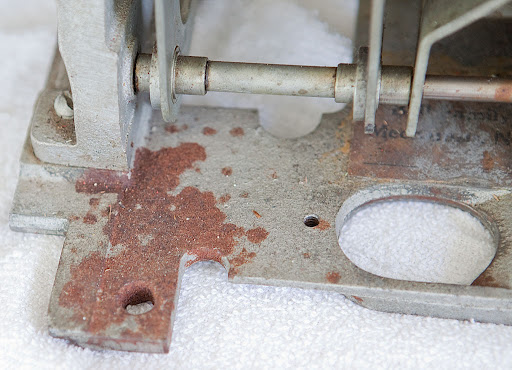

I have looked at your restoration instructions and found them very interesting I am currently engaged in restoring a similar Mills 777 model my self and often wondered about certain aspects of the machine not always knowing if some part or assemble should be in the machine or not.
One part in particular was the arm that stopped the clock operating on a fixed shaft with a tension spring – I bought a Mills Bursting Cherry (Brown Front) in near perfect condition (what a bargain that was been moth balled for 30 years) and other than a spring that appered to be attached to no where, I pondered for ages wondering where this spring needed to be connected – Now I know from your excellent visual and documented instruction.
Keep up the good work – a very interesting and helpful web site. Kind regards Johnny ( United Kingdom)
Thanks, Johnny! I envy your Bursting Cherry… that sounds like a great find!
Hi Slotter
I purchased a beat up collection of slots about 7 years ago and one by one have I have stripped down, found missing parts on ebay, asked questions to anyone how would listen and have tried to return them to original state.
I just found your site a few days ago and think it is great, keep doing it !
Best
John
I bought a Mills War Eagle slot a few weeks ago. It worked fine, then all of a sudden, you could still drop a quarter in, but the reels have stopped turning. The quarter does however, still advance across the escalator. Any ideas what to check here?
Great site by the way. Not a lot of info out there on Mills slots.